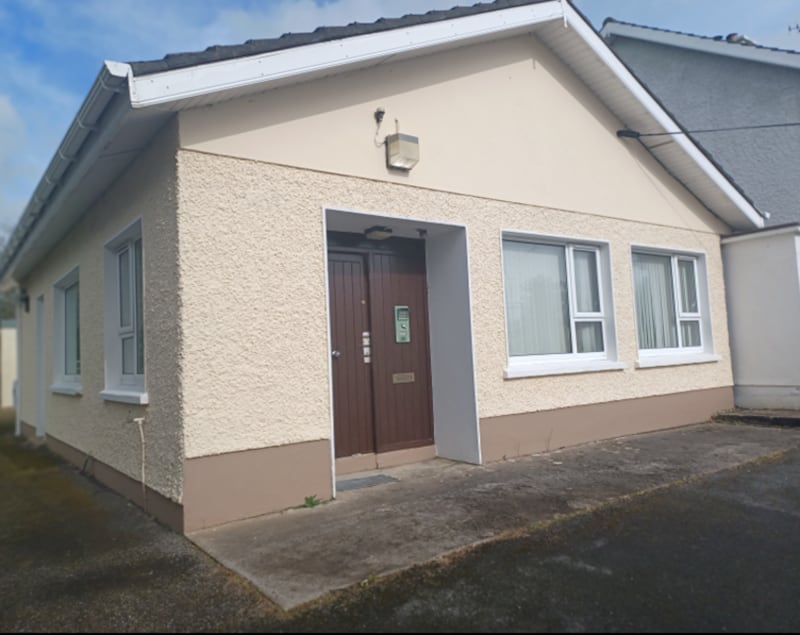Waking up in a Garda station isn’t anybody’s idea of a good time, unless, of course, you own it. A steady flow of former Garda stations have been hitting the market in recent years. House-hunters on the lookout for a home with a backstory should keep their eyes peeled.
One west of Ireland estate agent has sold no fewer than eight Garda stations in Galway, Mayo and Donegal over the past 14 months. “There’s been loads of interest in all of them,” says Colm O’Donnellan of O’Donnellan & Joyce Auctioneers.
These buildings are typically well-located in the heart of towns and villages with decent parking, some with gardens. Some also have heritage features.
The description of O’Donnellan’s most recent Garda station sale, near the coastal village of Bunbeg, Co Donegal, reads more like a holiday home than a former hub of crime prevention. It was a picturesque posting for a garda.
READ MORE

Located in the Donegal Gaeltacht and on the Wild Atlantic Way with beaches just minutes away, the former station sold at auction in November for €85,000, €55,000 over the advised minimum value. It’s just a 20-minute drive to Donegal airport with flights to Dublin, the UK and Europe.
A 1970s-built G-rated bungalow, the buyer will need imagination and deep pockets. Photos show the station retained the public hatch where crimes were reported and passport applications were signed and stamped. The St Brigid’s cross woven from rushes still hanging on the wall is a church and State mash-up unlikely to be seen these days.
[ What will €1.25m buy in Dublin and Waterford?Opens in new window ]
[ Divine nine: Our favourite homes of 2023Opens in new window ]
Others of O’Donnellan’s sales include a former station in Maam Valley, Co Galway, which sold for €216,000, €186,000 above the advised minimum value. Another in Athenry sold in September for €240,000.

“Many of these stations have been out of use for a number of years now. They are all dated and obsolete inside. They are falling into disrepair, some more than others,” says O’Donnellan.
In November, online bidding for the former Garda station in the heritage village of Ardagh, Co Longford, was fast and furious with the final bid reaching €196,000, some €70,000 above the advised minimum value, sold through Sherry FitzGerald Quinn. It had last operated as a Garda station in 2013.
“We must have had a good 30 individual viewings, so we were expecting a lot of interest. We were getting calls and emails literally every day about it,” according to the Sherry FitzGerald Quinn office. Most of the interest was from owner-occupiers.
Like most Garda stations, the national school, shop, church and GAA grounds are all within walking distance.
The station’s main office had a vaulted wood-panelled ceiling that would make an impressive reception room. Another room with a concrete floor and a small, high, bar-covered window looked like a former holding cell and would benefit from a refresh.
Village for sale
The Garda station, the priest’s house, the post office, the bank, the pub; in nearly every town and village in Ireland, one or all of these buildings now lie empty. Some are falling into disrepair and dereliction.
Some 176 bank branches around the country have closed in the last five years alone, according to data compiled by The Irish Times.
Some 1,800 of pubs have closed their doors between 2005 and 2021, according to Drinks Industry Group of Ireland figures.
Since 2012, 139 Garda stations have been closed due to revised policing plans. Some of these stations were only open part-time and manned by a single garda. An Garda Síochána review determined resources could be better used on the front line if those stations no longer had to be staffed and maintained.
Since 2012, the Office of Public Works (OPW) has assumed control of the capital and maintenance budgets for all state-owned property, including most Garda stations.
Of the 139 stations closed, 60 have been sold and five are sale agreed, according to OPW figures.
The stations closed are more often in less populated or remote areas. Some are in highly-sought-after beauty spots.
Some 12 stations had been shuttered in Kerry, including those in the holiday destinations of Ballinskelligs, Valentia Island and Fenit. There were closures too in Adrigole and Goleen in Cork and Inistioge in Kilkenny.
In the midwest, Garda stations auctioned earlier this year at Lahinch and Doonbeg may have piqued the interest of surfing or links golf enthusiasts.
Two others at Galbally and Shanagolden, both in Limerick, were withdrawn days before auction when Limerick City and County Council confirmed last-minute interest from the OPW in acquiring the properties.
The OPW says no surplus or vacant property is sold until it is first established if the property is required for alternative State use. It provides a list of properties to the Land Development Agency, local authorities and relevant Government departments so that buildings can be assessed for suitability for housing or other State use. Submissions from community and voluntary groups are considered too.
Of the 139 Garda stations closed, 10 have been retained for alternative State use and six more are being considered for that purpose. A further 10 have been assigned to local communities, the OPW says.
Successfully repurposed Garda stations include one on Kerry’s Valentia Island, where the old station has been taken over by the Irish Coast Guard while the National Parks and Wildlife Service uses the closed-down station in Ballylongford, Co Kerry. A former station in Loughglynn, Co Roscommon, is now used as a HSE ambulance base.
Community development groups have taken over former Garda stations in Ballinskelligs in Kerry and at Mulranny and Tourmakeady in Mayo. A 700-pupil primary school is planned for the demolished Harcourt Terrace station in Dublin city centre.
These numbers mean there could be about 40 more already closed Garda stations around the country that, after review, may come to market.
Stations for sale
There are two stations advertised for sale including the old Garda station at Glencolmcille, Co Donegal, which is near beaches, mountains and the highest sea cliffs in Europe at Slieve League, and is listed for €195,000.
This imposing building, with some period features and a natural slate roof, would make a large family home or tourist accommodation, according to Henry Kee estate agents.

In Ballyragget, Co Kilkenny, the former Garda station comprises the main office and residential quarters on a 0.2-hectare (0.5-acre) site, and is offered at €375,000. The terraced building retains some period features and photos show plenty of evidence of its previous garda occupants. Planning permission was previously granted for three terraced houses on the site, according to the selling agent Fran Grincell.

Is there a grant for that?
Many of the Garda stations selling right now have already been empty for a decade and are in need of modernisation.
Indeed, the average age of a Garda station is 74 years, according to a 2010 survey conducted by An Garda Síochána and the OPW. Approximately a quarter of stations were built in the 1800s and some in the mid-1700s.
Potential buyers can mitigate refurbishment costs by availing of the Government’s Croí Cónaithe vacant property refurbishment grant. Buyers can apply for grants of up to €50,000 to renovate a vacant property and up to €70,000, if the property is derelict, provided they transform it into a residential home.
To qualify, the property must have been vacant for two years or more. Applicants must own the property, or be in the process of buying it and they must live in the property as their principal private residence when the work is completed, or make it available for rent and register with the Residential Tenancies Board.
Buyers can also avail of separate Sustainable Energy Authority of Ireland (SEAI) grants towards insulation, a heat pump and solar panels. Work covered by the SEAI scheme is not covered by the vacant property refurbishment grant.
Buyer beware
Building costs remain high and some critics argue that the available grants are not enough to convince someone without a construction background to take on a renovation, never mind their bank. If the cost of the work looks like being more than the property will ultimately be worth, a bank will be slow to lend.
Vacant and derelict Garda stations may be costly to convert. Would-be owner occupiers take note – if the roof is rotten, you could end up spending €30,000 on that alone.
Potential buyers should get the building professionally assessed, either by an architect or an engineer before buying. While vacant and derelict properties may come cheap, you don’t want the cost of repairs to spiral.
A building that has been vacant for years is likely to be damp, it may have water ingress and will not have adequate insulation or heating. If the building is located in a town close to others or on a main street, there may be challenges with access for building works too, adding to cost.















